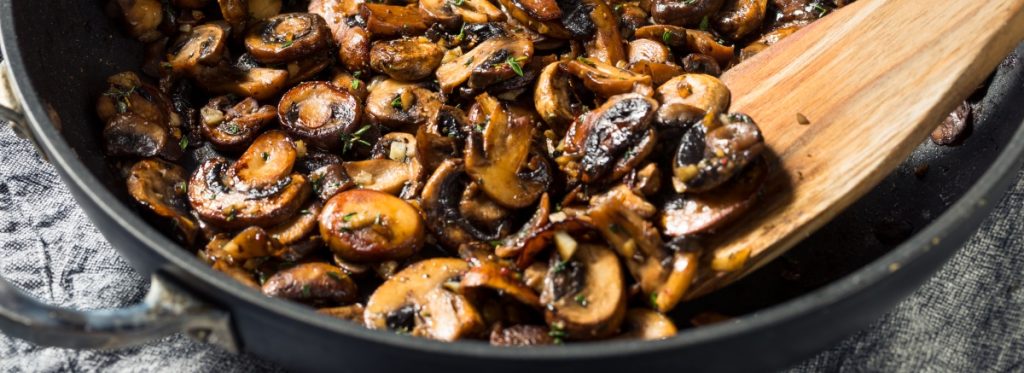Mushrooms offer a range of health and nutritional benefits, and many of them taste delicious. As a result, they’re becoming more and more popular.
And, while there are several ways you can cook and enjoy mushrooms, sauteing them is quick and easy, and you can serve tasty sauteed mushrooms with just about anything.
In this article, you’ll find a step-by-step guide on how to saute mushrooms with important tips to help you get perfectly browned, delicious mushrooms every time.
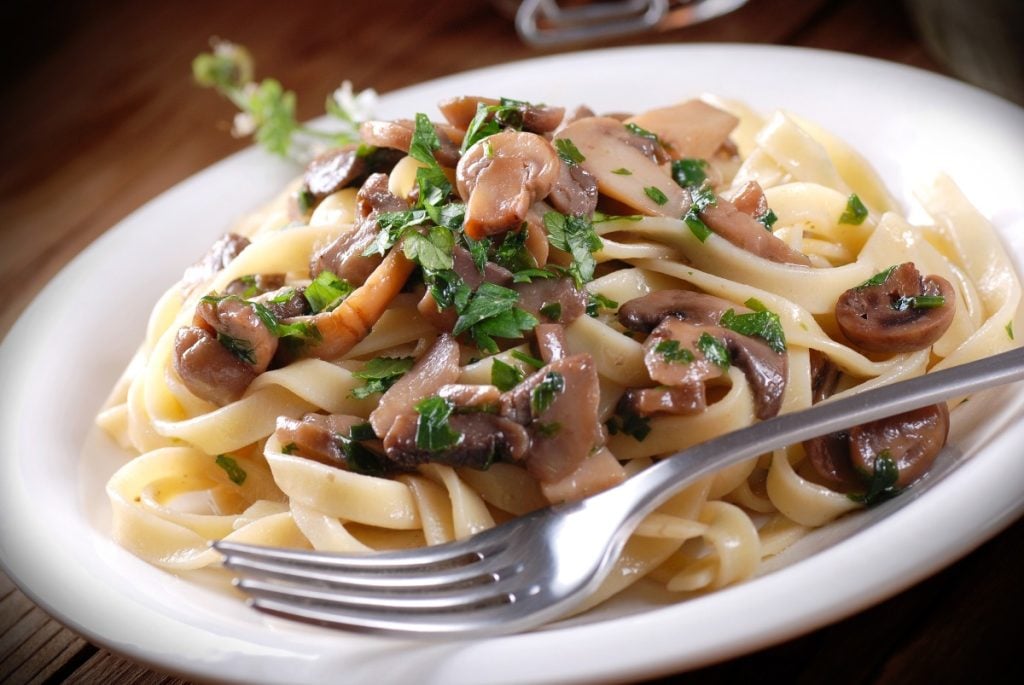
Why Saute Mushrooms?
Sauteeing releases mushrooms’ natural moisture, concentrates their sugars, browns them, and makes them tender, not soft and spongy.
While some mushrooms are delicious served raw in salads, most mushrooms are more nutritious and flavorful when cooked.
Cooking makes some of the beneficial nutrients in mushrooms more accessible, including some powerful antioxidants.
Additionally, many types of mushrooms are only safe to eat after cooking as heat destroys the toxins and carcinogens they contain.
Cooking also concentrates and intensifies a mushroom’s flavor and umami taste.
There are several ways to cook mushrooms, including roasting, grilling, microwaving and simmering, but sauteing has some advantages.
Many mushroom recipes advise sauteing mushrooms before adding them to other dishes for better flavor and texture.
As mushrooms are like sponges and very good at absorbing the flavors of things they’re cooked with, lightly sauteing mushrooms is the best way to cook them to experience their unique mushroom taste.
Another benefit of sauteing is that it’s quick and easy. In under 15 minutes, you can feast on delicious sautéed mushrooms.
Also, sauteing mushrooms before you freeze them helps them retain their flavor and texture better.
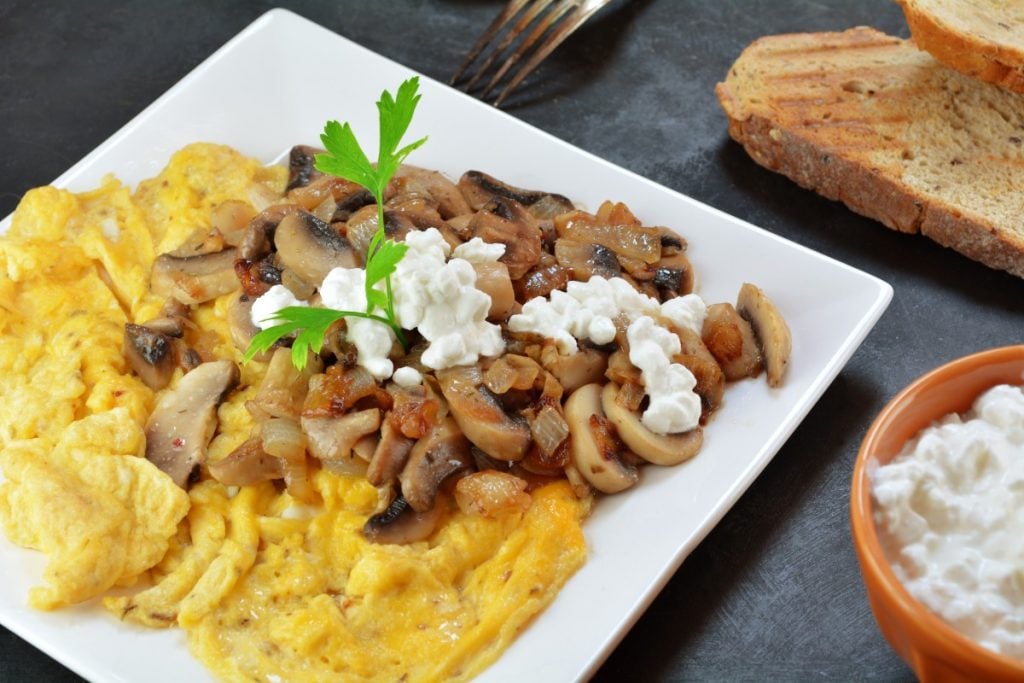
Why do you roast mushrooms?
With all the benefits of sauteing, you may be wondering why someone would roast mushrooms.
There are two reasons you may want to roast mushrooms.
Firstly, when done correctly, roasting mushrooms at high heat gives them a nice crispy texture that you don’t get with sauteed mushrooms.
And secondly, roasting is the best way to cook stuffed mushroom caps. Stuffed mushroom caps are extremely delicious, and you can make them with a vast selection of fillings.
Best Mushrooms For Sauteing

All mushrooms taste wonderful when sautéed, including common button mushrooms. You can saute any of the mushrooms available at your local store or market.
But, cremini, shiitake, chanterelle, black trumpet and morel mushrooms come highly recommended as they have stronger flavors and contain less water than button mushrooms, making them easier to sauté.
Additionally, portobello, oyster and maitake mushrooms also have wonderful meaty flavors and textures, making them ideal candidates for sautéing.
Many chefs like to sauté a mixture of mushrooms together. A favorite mix that provides lots of flavor and texture contrasts is a combination of cremini, shiitake and oyster mushrooms.
You can also use other wild mushrooms like porcini, chanterelles, lion’s mane, chestnuts or morels in place of the oyster mushrooms.
The options are endless, so we suggest sauteing several types of mushrooms to discover which are your favorite.
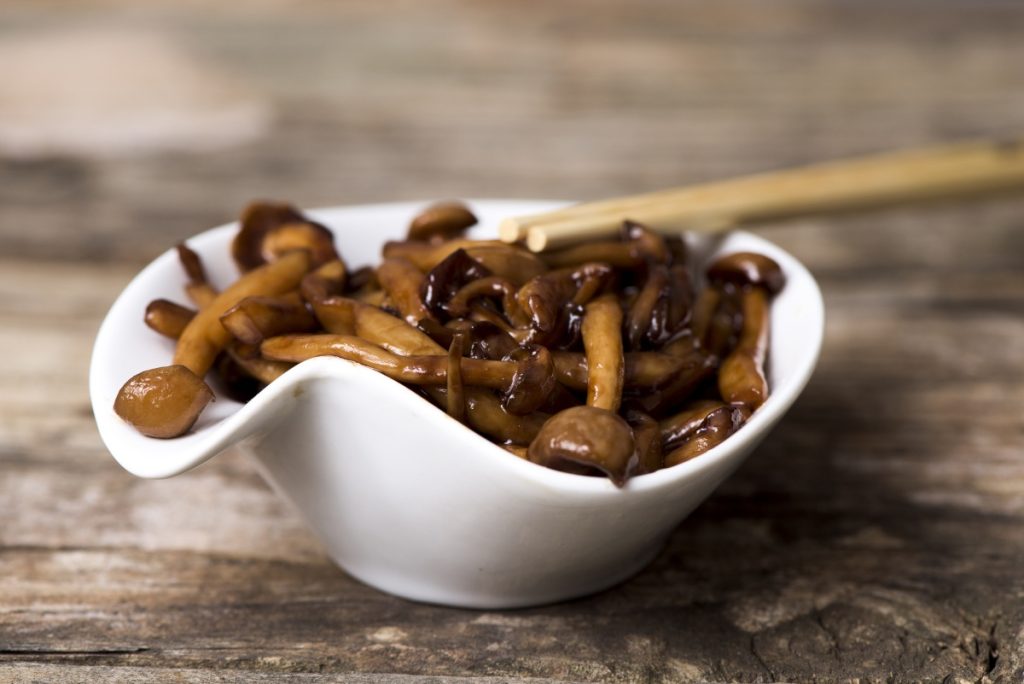
How to Saute Mushrooms Step by Step
For those of you wondering, “How do you clean and saute mushrooms?” Here’s a step-by-step guide that will have you savoring tasty sauteed mushrooms in no time.
Step 1: Clean Your Mushrooms
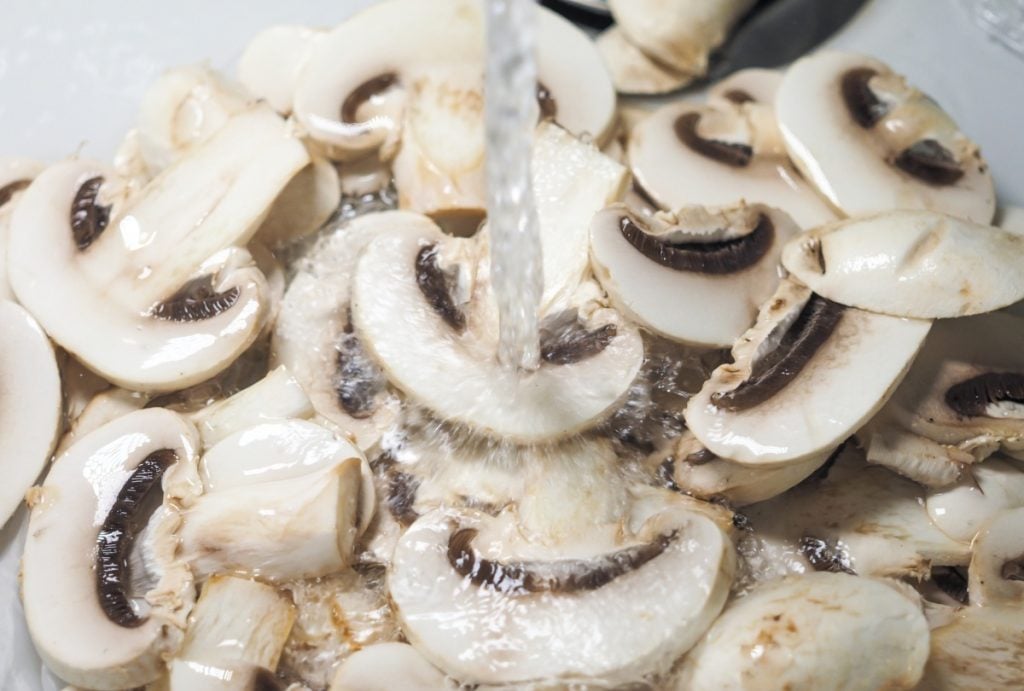
Before you can sauté your mushrooms, you need to clean them.
If you have relatively clean store-bought mushrooms, this involves a quick rinse under running water and a pat dry with a paper towel.
But, if you are dealing with wild mushrooms collected in the woods, it’s a little more involved.
You may need to trim off damaged sections and stubborn dirt before rinsing and drying them.
Wild mushrooms with lots of nooks and crannies for insects to hide in may also need to be dunked in water to remove the insects.
Our article, “How to Clean Mushrooms: A Step by Step Guide” has more information for you on cleaning different types of mushrooms.
Step 2: Cut Your Mushrooms
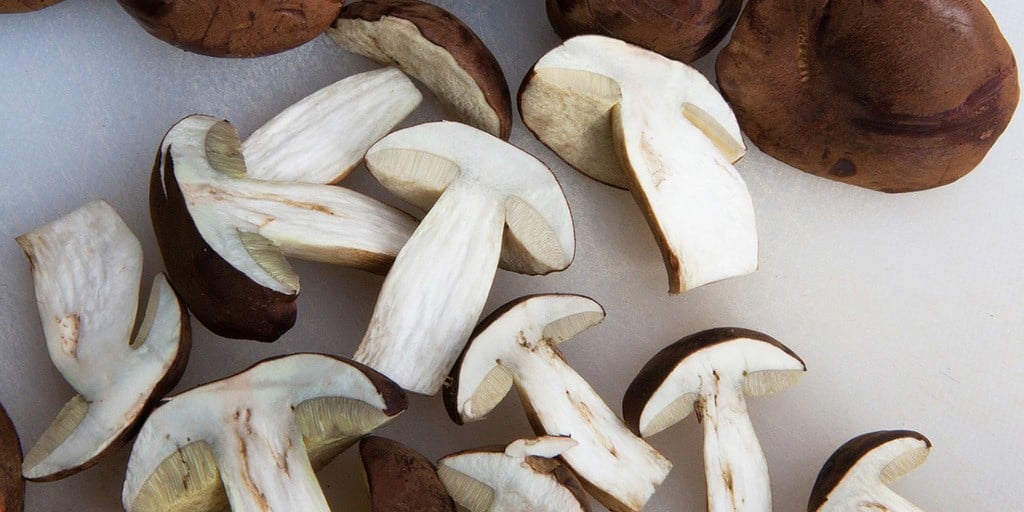
Leave the stems of your mushrooms intact unless you are using shiitake mushrooms.
Cut your mushrooms into similar-sized pieces but don’t slice them too thin as they will shrink while cooking and shrivel to almost nothing.
Meatier pieces cook best, and it’s advisable not to make slices thinner than ¼ inch (0.6 cm). Rather cut your mushrooms into quarters or halves from top to bottom.
Step 3: Choose a Cooking Fat
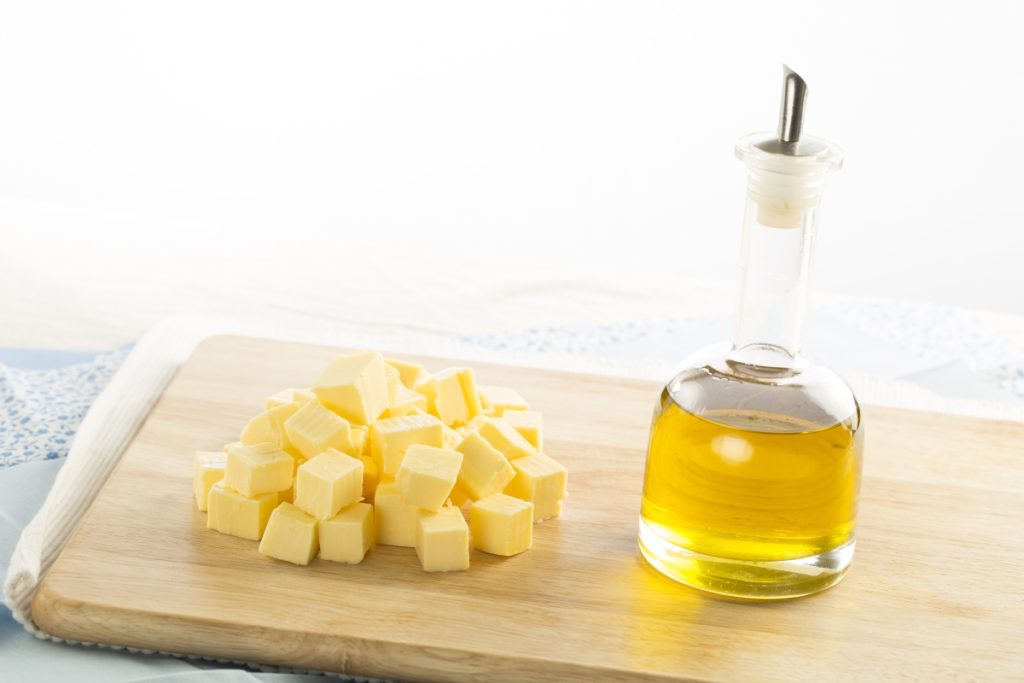
The fat you use to sauté mushrooms is the first way you add flavor. You can use butter, any oil, duck fat, lard or rendered bacon fat.
Butter tastes great and boosts the umami taste of mushrooms, but it burns at a lower temperature than oil and can be tricky.
Clarified butter, the golden butterfat left after you remove milk solids and water from normal butter, has a higher smoke point and works beautifully for sauteing mushrooms.
Olive oil adds a fruity flavor and is a good option for those following a plant-based diet.
Duck fat, lard or rendered bacon fat all add loads of flavor, but it’s best to use them when sauteing mushrooms that don’t have strong or unique flavors.
Step 4: Heat Your Pan
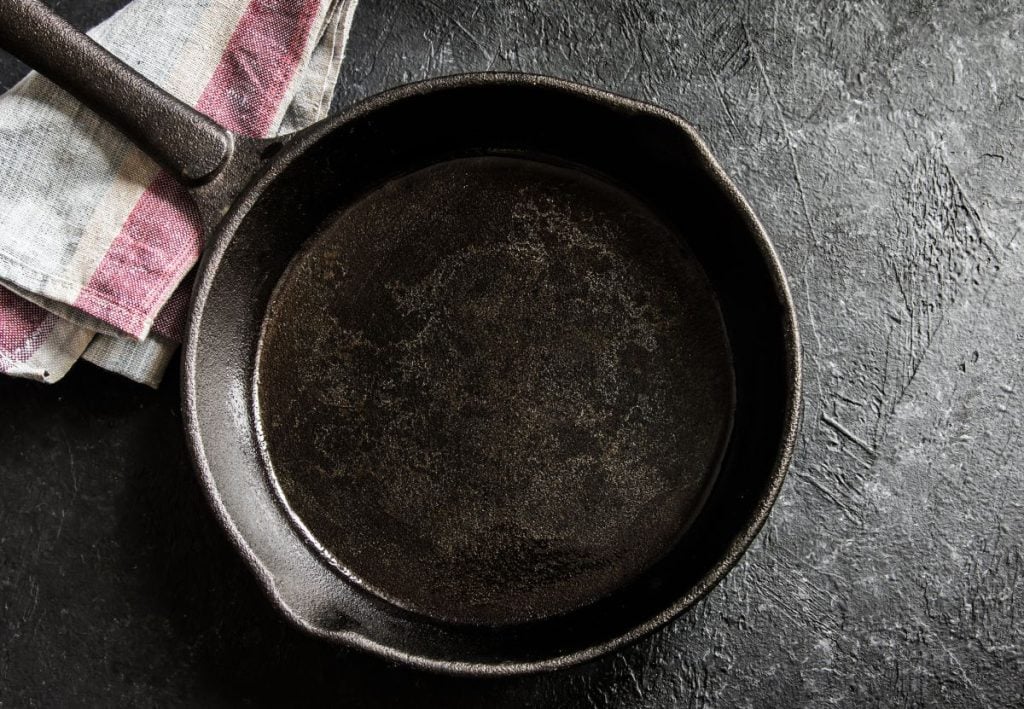
A heavy, heat-retaining pan works best when sautéing mushrooms. Cast iron is great as it heats evenly and retains heat when adding the mushrooms.
Before you add mushrooms, heat your pan over high heat and let your oil, butter or lard get hot.
Your mushrooms should sizzle when they hit the pan. Keeping the heat up is important as this helps moisture evaporate quickly, creating delicious caramelized mushrooms.
Step 5: Saute Your Mushrooms in Batches

My biggest tip when making sauteed mushrooms is not to overcrowd your pan. Overcrowding is one of the main reasons for soggy mushrooms.
If you put too many mushrooms in the pan at once, they release too much water and end up boiling in their liquid instead of caramelizing.
Saute mushrooms in small batches that allow you to spread them out until they’re just touching one another.
Another tip for getting nicely browned, sautéed mushrooms is not to stir them too much.
When you add your mushrooms to the pan, stir to coat them evenly in butter or oil and spread them out. Now leave them for four to six minutes without stirring.
The heat will draw the moisture out of the mushrooms into the pan, and if undisturbed, it will evaporate and leave you with a concentrated mushroom flavor.
How Long Should I Saute Mushrooms?
Many people wonder how long to saute mushrooms, but there’s no set rule as moisture content varies between types of mushrooms, so the time it takes for them to brown will also differ.
Most recipes recommend browning on one side for three to six minutes and then turning them and leaving them until they’re evenly brown.
But, if they’re giving off lots of moisture, keep the heat up and leave them until all the excess moisture has evaporated.
How Do You Know When Sauteed Mushrooms Are Done?
When there’s almost no liquid left in the pan, and your mushrooms have browned, they’re done.
Step 6: Add Flavor (Optional)
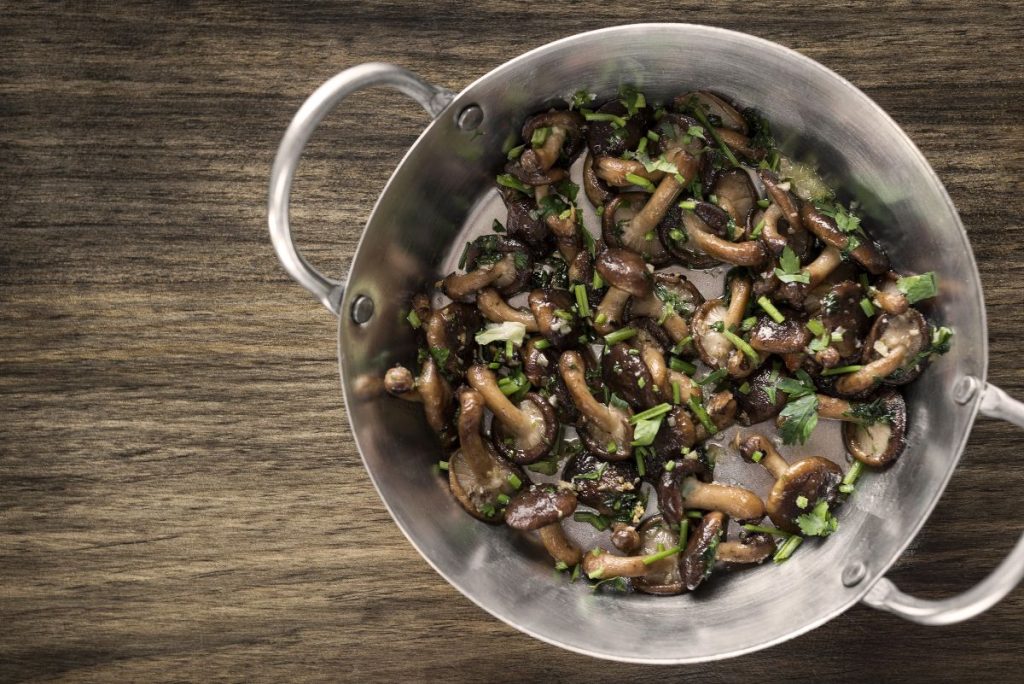
There are two ways to add more flavor to sauteed mushrooms:
1. Add Aromatics
When your mushrooms are lightly golden and almost done, it’s time to add your choice of aromatics.
French cooks like to sprinkle them with garlic, herbs or shallots. But, you can use any of your favorite herbs or spices, and rosemary, thyme, sage, oregano, chives, parsley or dill all work well.
It’s best to add minced garlic right at the end as it should not cook for too long. The same goes for dried spices like cumin, paprika or curry powder.
Add them at the very end but make sure there’s some fat left to help release their flavor.
2. Deglaze
To capture as much mushroom flavor as possible, you can deglaze the pan and pick up the mushroom flavors sticking to the bottom.
When the mushrooms are well browned and crispy, keep the heat high and add a couple of tablespoons of liquid to the pan. Then scrape at the bottom to lift the mushroom juices.
You can use water if you just want more mushroom flavor or add additional flavor with wine, sherry, stock or cream.
Step 7: Serve and Enjoy
When your sauteed mushrooms finish cooking, remove them from the pan, season to taste and serve on toast or as a topping or filling.
Sauteed Mushrooms are perfect served as a topping for chicken, steak, burgers or mashed potatoes.
And, they make a tasty filling for tacos, wraps, quesadillas, omelets, sandwiches, pancakes, etc.
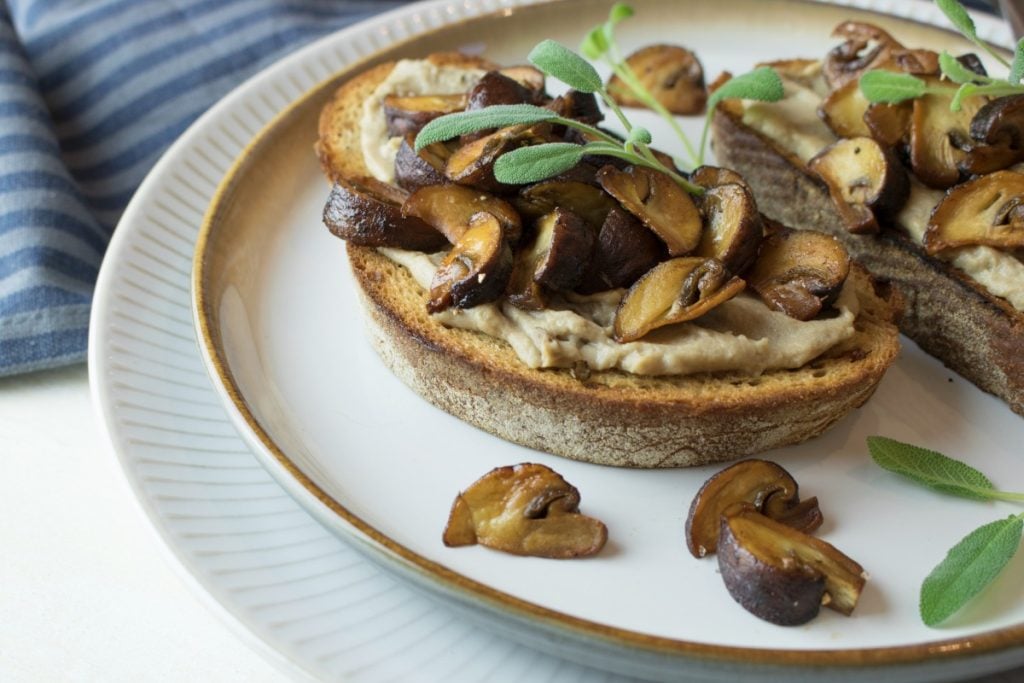
How to Saute Shiitake Mushrooms
Shiitake mushrooms have loads of umami and robust, meaty flavors. Sauteing is one of the best ways to cook shiitake and make the most of these flavors.
You can follow the step-by-step guide above to saute shiitake mushrooms with one difference.
Only use shiitake mushroom caps. Shiitake stems are fibrous and leathery and don’t soften when sautéed, so cut them off where they join the cap.
Save your shiitake mushroom stems as you can use them later to flavor stocks and sauces.
How to Saute Mushrooms And Onions

Mushrooms and onions sauteed together are quick, easy and delicious and make the perfect side dish.
Many recipes for sauteed mushrooms and onions include Worcestershire sauce, soy sauce or wine to add even more flavor.
To saute mushrooms and onions, follow the steps above with the following additions.
- When preparing your mushrooms, you also need to slice your onions.
- When heating your pan, set the heat to medium-high. Add the sliced onions to the hot pan first and cook them for two to five minutes, occasionally stirring, to allow them to soften and brown.
Then turn up the heat, add the mushrooms and follow steps five to seven.
Garlic Balsamic Sauteed Mushrooms and Onions
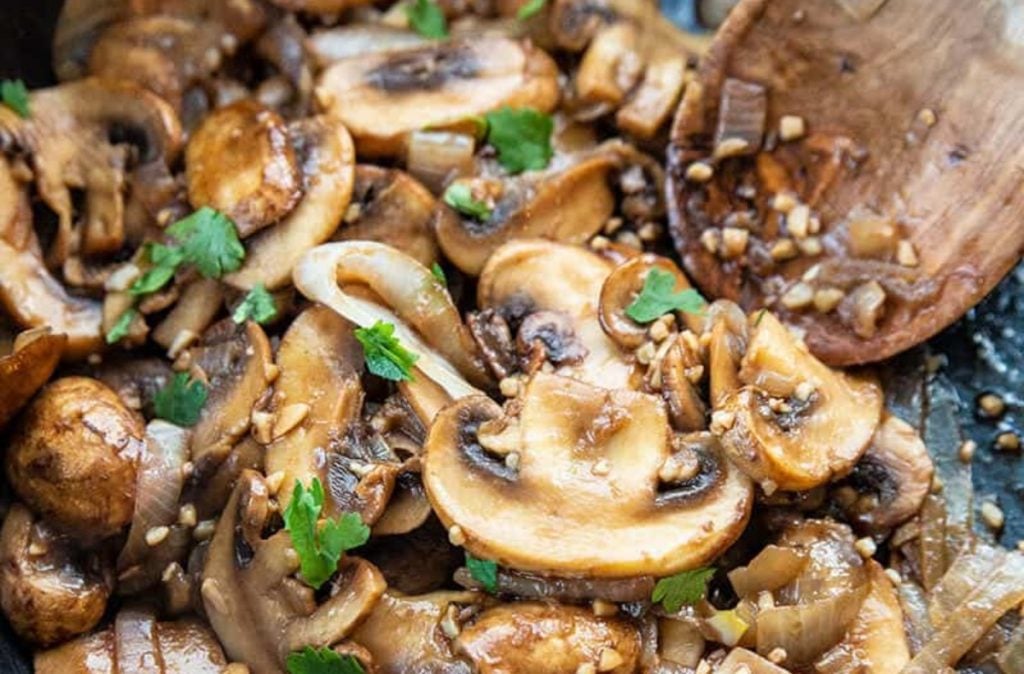
This recipe for sauteed mushrooms and onions from The Kitchen Magpie has a sweet, tangy flavor and is a tasty treat.
Ingredients
- 2 tablespoons olive oil
- 2 tablespoons salted butter
- 1 large white onion sliced into rings
- 1 pound fresh mushrooms cleaned and sliced
- 2 tablespoons minced garlic
- 3 tablespoons balsamic vinegar
- 3 tablespoons white wine optional
Instructions
- Heat the olive oil and butter together in a large pan.
- Add in the onions and start and saute for 5 minutes to get them started, then add the mushrooms.
- Saute until the mushrooms have reduced in size, lost their moisture and are golden brown
- Add the garlic and saute until fragrant.
- Stir in the balsamic vinegar and wine and cook for another 2 minutes, deglazing the bottom of the pan (scrape off any browned bits stuck on the bottom of the pan, so they go into the sauce)
- Season to taste with salt and pepper and serve
Health Benefits of Eating Mushrooms
Mushrooms have so many health and nutritional benefits that many people consider them a superfood.
Different types of mushrooms have different medicinal properties, but all mushrooms are low in sodium, calories, and cholesterol and packed full of vitamins, minerals, and essential nutrients.
Here are some of the health benefits of eating mushrooms:
- Boost the immune system – Mushrooms help boost the immune system in several ways as they’re anti-inflammatory and contain powerful antioxidants.
Selenium, in particular, is a rare mineral with antioxidant properties that helps lower oxidative stress, protect against cancer, reduce inflammation and enhance immunity.
- Assist with weight management and diabetes control – Mushrooms are a good source of dietary fiber that encourages healthy digestion and helps prevent diabetes.
Dietary fiber plays a significant role in making a person feel satiated or full. Mushrooms contain two types of dietary fiber that can act as “bulking agents” in the digestive system and help reduce appetite.
- Maintain heart health – The antioxidants found in medicinal mushrooms can help lower blood pressure, risk of stroke, heart attack, and other cardiovascular conditions.
Mushrooms are high in potassium that your body uses, together with sodium to regulate blood pressure. In this way, mushrooms can help lower high blood pressure and prevent cardiovascular diseases.
- Aid nutrient absorption – Mushrooms contain copper and vitamin D that aid the absorption of beneficial minerals like iron, calcium and phosphorus.
Our article on the Health and Nutritional Benefits Of Mushrooms has more information for you.
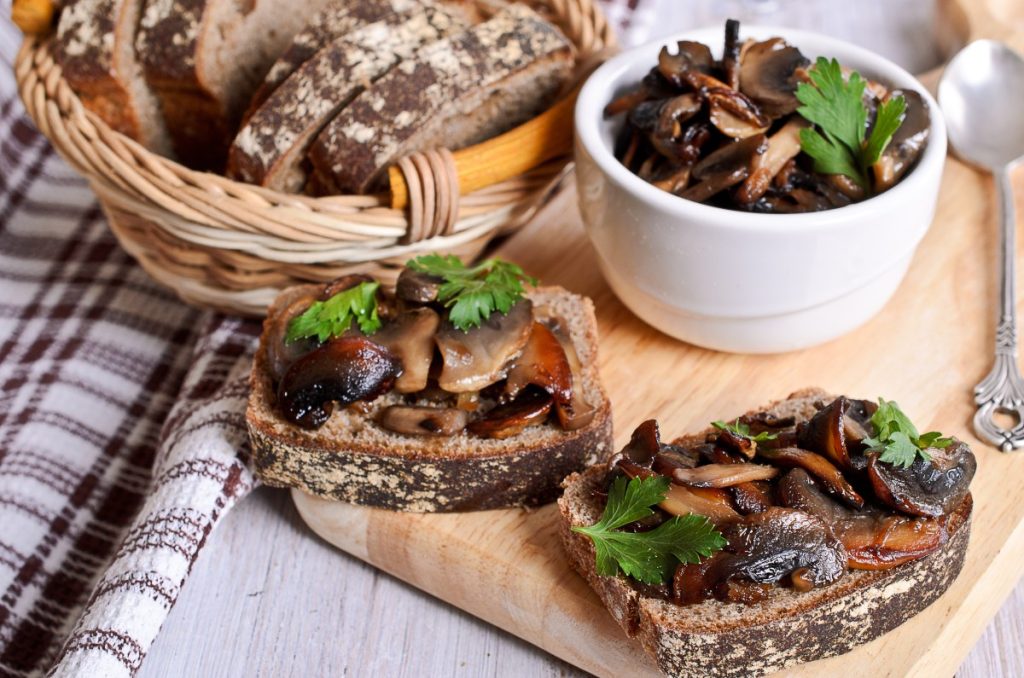
Final Thoughts
Mushrooms provide a host of nutrients and health benefits, so it makes sense to include them in your menu as often as possible.
Sauteing works for most types of mushrooms and is one of the quickest and easiest ways to prepare them and enjoy their unique flavors.
To keep your mushrooms from getting soft and soggy, remember to use high heat, don’t overcrowd the pan and don’t stir them too much.
Our articles 30 Of The Best Mushroom Recipe Ideas and 25 Of The Best Vegan Mushroom Recipes will help you discover more delicious ways to prepare mushrooms.
